Mastering off-grid living: A complete guide.
Mastering off-grid living is no simple task.
One must have a plan to have the slightest chance of mastering off-grid living. And in my particular case, mastering off-grid living in the Upper Peninsula of Michigan.
The right climate and geological features make huge differences.
My Great Pyrenees, A. Maycee Grace, and I have spent the last two summers living off-the-grid for a total of 24 weeks. For now, we’re overwintering in the South. The winter months also will lead us to our home in Dallas, Texas, and down to see one of my twin daughters in the Pan Handle of Flordia.
Maycee and I have come to love our tent camping adventures on family land northwest of Marquette, Michigan. To go a step further, we’re practicing off-grid living in the mountains, as we are in the Huron Mountain Range.
Yes! I have the power of Zeus and throwing lightning bolts of rock!
Our main campsite is a stone’s throw from Lake Superior; less than 15 miles due north.
When the deciduous trees lose their leaves in the fall, there are places on our 40 acres of family land from where you can see the lake in the distance.
I’ve also sent my drone up 100-plus feet from one of the main campsites on the property and captured some breathtaking video.
From this experience, I can assure you the abundance and lack of resources also impact the success of such an off-grid living adventure.
Learning about and going off-the-grid depends on many factors we will discuss in the section to follow.
For whom did I make this guide about mastering off-grid living?
Let’s talk about the expression “mastering off-grid living.” Ask 100 people and you will likely hear 100 different definitions.
To begin breaking things down, let’s talk about the term “mastering.”
Since there’s no known method I’m aware of to grade how masterful anyone is at off-grid living, the nature of the definition, to me, is nebulous.
Living off the grid for beginners does not mean the same for someone who grew up living on an off-grid living homestead. More so, living off-grid for beginners in the UP is not the same for someone living off-grid in Alaska, a lower-tiered state, or another country.
The same principle applies to off-grid living homesteaders, off-grid living in a timber framed cabin v. living off the grid in a traditionally constructed house. Again, whether it’s in the UP or elsewhere also becomes a critical factor.
Saying one has “mastered,” something, as a novel writer, is the equivalent to me of when the hero in a story makes the claim, “I’ve got this!” and in the same scene learns they don’t.
Each day one lives off the grid is full of its share of ups and downs. How they are managed, the resources used or needed, and the length of time it takes to achieve “mastery” over the variables, are all subjective.
Knowing this information is why I constructed this post for:
- Those who find themselves concerned about rising costs and global events.
- Those tired of the fast-paced, technology-driven lifestyle that society dictates.
- Those who long for a simpler, more sustainable way of living that is in harmony with nature.
The purpose and benefits of the directory.
This mastering off-grid living directory is the gateway to detailed informational posts about the subject.
From here you can find almost everything you need to know about the subject.
This page leads to the site’s main off-grid living page, different from a blog post such as this one. Over time, many other informational, transactional, and comparison posts will appear in the blog section of this site and will be linked to that main category page for OGL.
In the meantime, here is a table to provide you with an idea about where we’re going with the concept of mastering off-grid living.
The Timberlander’s Off-Grid Living Handy Guide.
As I’ve experienced off-grid living in the UP since the summer of 2022, these are many of the issues I’ve already faced. Have I mastered them? Let’s just say they’re like life. You get older and sometimes wiser.
| Off-Grid Living | Renewable Energy |
| Sustainable Living | |
| Self-Sufficiency | |
| Energy Independence | |
| Sustainable Water Sources | |
| Eco-Friendly Technology | |
| Sustainable Transportation | |
| Off-Grid Homes | |
| Emergency Preparedness | |
| Outdoor Living | |
| Off-Grid Appliances | |
| Waste Management | |
| Sustainable Gardening | |
| Off-Grid Communication | |
| Off-Grid Finance |
The High-Level Overview of Off-Grid Living
What is Off-Grid Living?
First, let’s establish a few definitions of what we’re talking about.
Off-grid living includes a self-sufficient lifestyle without or with reduced reliance on public utilities.
As I said above, mastering off-grid living is a nebulous term. But let’s say, for the sake of discussion, it means you’re good. Like “damn good,” at living off-the-grid.
This means greater self-reliance on sources of electricity, water supply, and gas.
The level of ‘Off-Griditty’ is as different as fingerprints.
One’s level of “Off-Griditty,” (my word,) depends on many factors.
But we begin with the assumption that no two situations are identical. Stretches of land may seem similar in their region. But they remain unique in qualities, space, trees, location, etc.
Living two miles north on a county road may mean having municipal water or not—the same for power lines.
One piece of property may have springs for water sources or be dry as a bone. Another, a mile away, might have a lake on it.
They most definitely are in the same region, but the differences between them are vast.
Off-Grid Power Sources
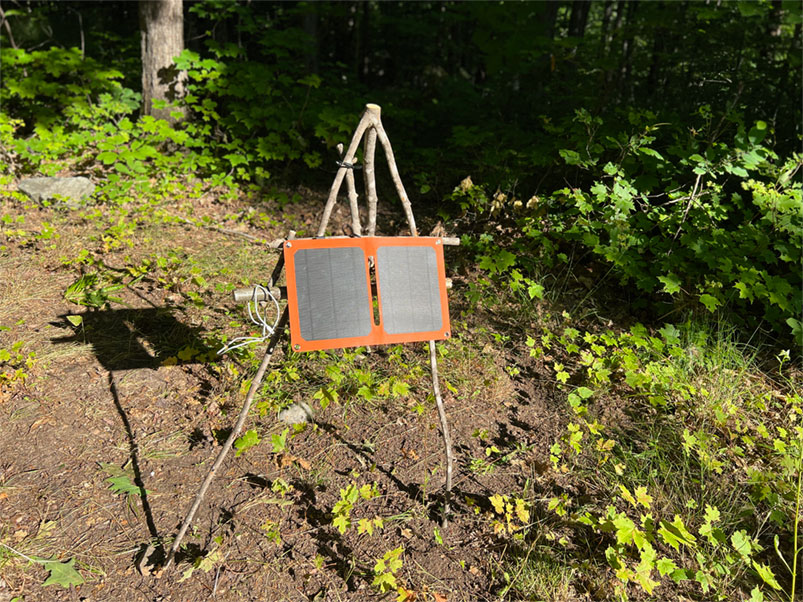
Mastering off-grid living: A solar panel on a stand the UP from the summer of 2022.
Mastering off-grid living involves at least a basic understanding of solar panels, wind turbines, or other alternatives that generate needed power.
However, some may live in zoned areas where the local authority requires a connection to water and sewer.
All energy sources have benefits and drawbacks. We explore these differences in comparison posts of the site’s blog.
Living off the grid may also mean collecting and recycling water.
Again, the situations vary. Some off-grid locations rely on rainwater harvesting and greywater systems.
Advantages and Disadvantages of Off-Grid Living
The advantages of off-grid living are as plentiful as the downsides.
Life off-grid may mean greater self-sufficiency and living a simpler lifestyle. One that promotes sustainability.
This also provides greater autonomy over resource allocation. More options exist for those not connected to public utilities.
Additionally, it can help people save money in the long term by reducing utility bills. The fine print here is on the words “long term.”
Be aware that significant disadvantages come with off-grid living.
Generating your own power often demands staggering upfront costs for technology.
Solar panels or wind turbines are expensive.
This is an instance where mastering off-grid living requires having a solid revenue stream, getting a loan, growing a money tree, or spending your life’s savings.
Some also take out hefty loans to invest in solar equipment, etc, as these systems often are pricy, to say the least.
For example, I’ve been looking at items on sale from Renogy, and they’ve knocked the prices down a large amount.
Their systems, and aspects of them, have as much as a 25-year warranty.
But when I add up the cost of a kit that I believe is in my range, even on sale, it’s north of $2,500. Maybe that’s a drop in the bucket for most, but in my situation, that’s a lot of money to disperse at one time.
Still, though, I highly recommend checking out the products at Renogy. I do not get affiliate sales at the time of writing this if you buy something.
Do you know the difference between Watt-hours per day and a volt?
Can you run a plug-and-play solar panel and wind turbine system the same way?
Studies from Michigan’s UP suggest that 99.9 percent of trees fail to grow electrical sockets.
These systems also are not plug-in and forget. They demand regular maintenance.
Tips for finding suitable land for off-grid living.
Finding the right piece of land to live off-grid can be a daunting task.
But with some careful planning and research, the search can be a rewarding experience.
Factors to consider when choosing land for off-grid living.
When looking for off-grid properties, you should keep in mind several factors.
Take into account the location’s climate and whether it’s suitable for year-round living.
Consider which terrain best suits your needs and preferences. Research local regulations as zoning laws can vary between states and counties.
Understand local regulations about self-sustainability, like composting toilets or rainwater harvesting systems.
Finding suitable property requires thoroughness and care.
Once found they will provide endless fulfillment from self-sustainability practices.
Not to mention finding life away from towns and cities and their distractions and stress.
Building an Off-Grid Home
Overview of different types of off-grid homes.
When it comes to building an off-grid home, there are a variety of options to choose from.
Timber frame shelters and supporting units.
My personal interest is in timber frame shelters and facilities.
A 12′ x 16′ structure does not require a permit to be placed in my neck of the woods.
So as 2023 progresses, together we’ll build a number of timber-framed units.
A-Frames
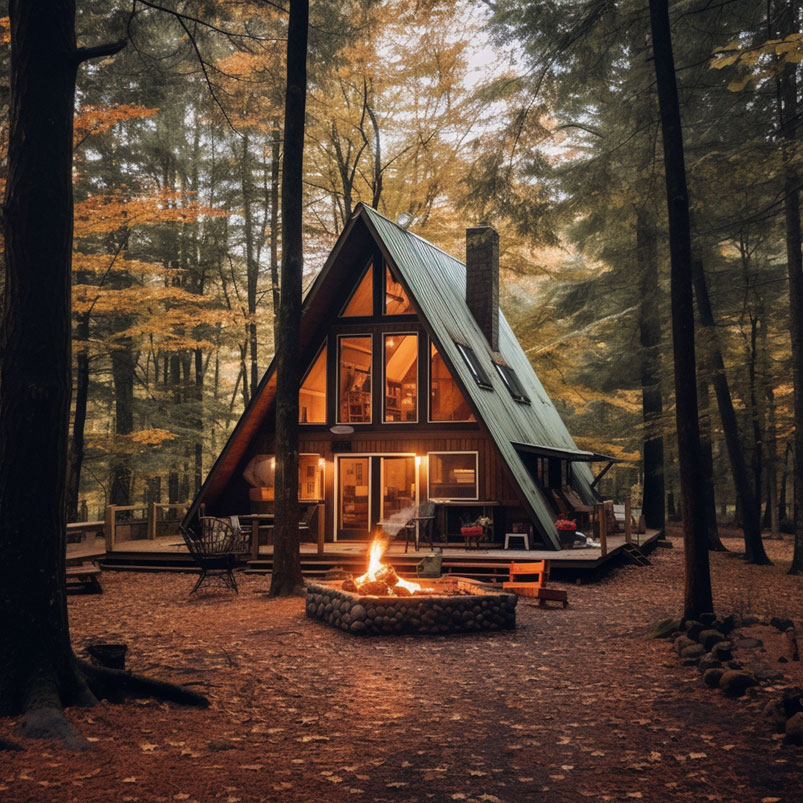
Mastering off-grid living: An AI-generated image of an A-Frame building in the UP of Michigan.
A-frame structures are beneficial if one lives up north where 200-plus inches of snowfall during the fall, winter, spring, and sometimes even summer months.
Given the long hypotenuse on the shelter’s long sides, snow doesn’t have a place to add to the snow load.
One popular option is a tiny home.
Another option is a yurt.
Earthships
Earthships are another type of off-grid home constructed from recycled materials.
Tips for building an off-grid home.
Never lose sight of the concept function dictates form.
Building an off-grid home requires designs for sustainability and energy efficiency.
This is another situation where the options are as wide as fingerprint variations.
Generating Power and Water Off the Grid.
The case for generating off-grid power.
Generating power off the grid is essential to mastering off-grid living.
So, one must identify the best method that suits your lifestyle.
Wind turbines serve as options in open windy areas. Solar panels come in handy when there’s ample sunshine.
But what if neither comes in great supply, like a woodsy area where it snows 200 inches per year?
Some use hydroelectric power from nearby water sources to generate power. But as we all know, water freezes.
What other options exist?
Water Collection Strategies
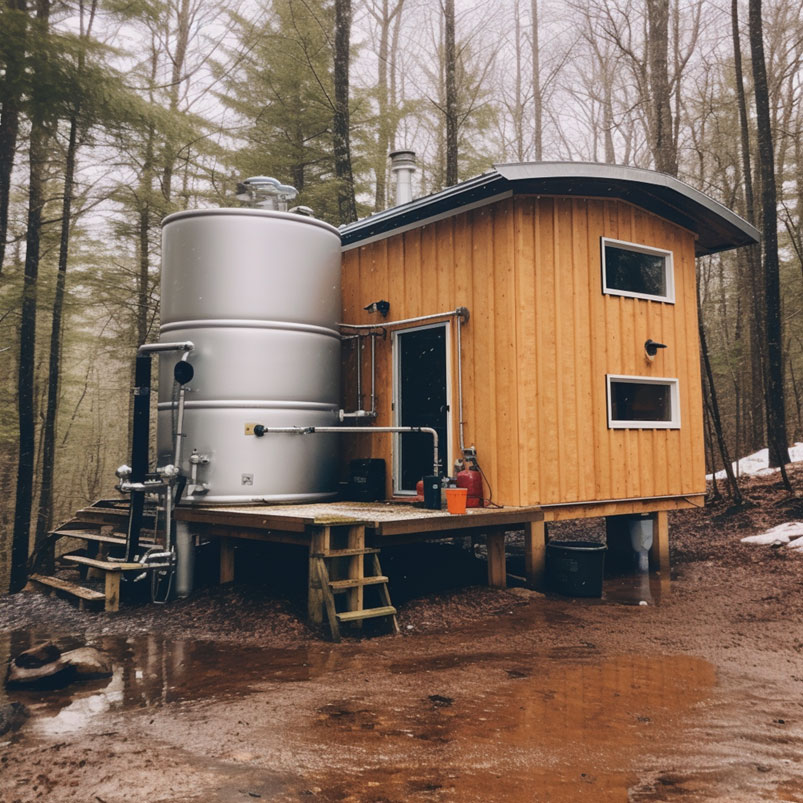
Mastering off-grid living: An AI-generated and exaggerated rainwater collection system of a structure in the woods of the Upper Peninsula of Michigan.
When you’re living off the grid, access to clean water is vital.
One of the most popular methods involves the collection of rainwater.
Another off-grid system includes using water twice.
Greywater systems conserve water by reusing wastewater from sinks, showers, and washing machines.
These systems filter out impurities and use the water for toilets or watering plants.
Growing your own food.
Benefits of Growing Your Own Food Off the Grid
One of the major advantages of off-grid living is having control over your food supply.
Growing your own food ensures that you know exactly what you are putting into your body.
This is another situation where you can save money in the long run.
Often with off-grid living, grocery stores, and food delivery services are unavailable. This makes growing your own food a necessity.
Techniques for growing food in an off-grid environment.
Two popular methods of growing your own food include permaculture and aquaponics.
In permaculture, plants and animals work together to create a self-sufficient environment.
Crop rotation and companion planting, create diverse ranges of crops while reducing waste.
Aquaponics involves using fish waste to fertilize plants in a closed-loop system.
The fish provide nutrients for the plants while the plants filter the water for the fish.
Raised bed gardening uses natural materials like straw or hay bales.
Vertical gardening uses hanging planters or trellises.
Hydroponics involves growing plants in nutrient-rich water instead of soil.
Growing your own food off-grid requires careful planning and elbow grease. But each form mentioned has financial and personal rewards.
Conclusion about mastering off-grid living.
The thought of moving off the grid may seem daunting at first.
But this lifestyle works and with patience and experience, the odds of mastering off-grid living are good.
Statistics around the world show that in these nutty times, more people are opting for a simpler life.
I hope you will use this guide in decision-making as you go about mastering off-grid living.
Increasing one’s self-sufficiency requires careful planning, research, and preparation.
Ignore almost everyone who says living a self-sufficient life means sacrificing modern comforts.
You need not sell all you own and put what didn’t sell into storage. My situation is no doubt different from yours.
But I will tell you this, I do not regret anything I’ve done one iota.
No, not a single one.

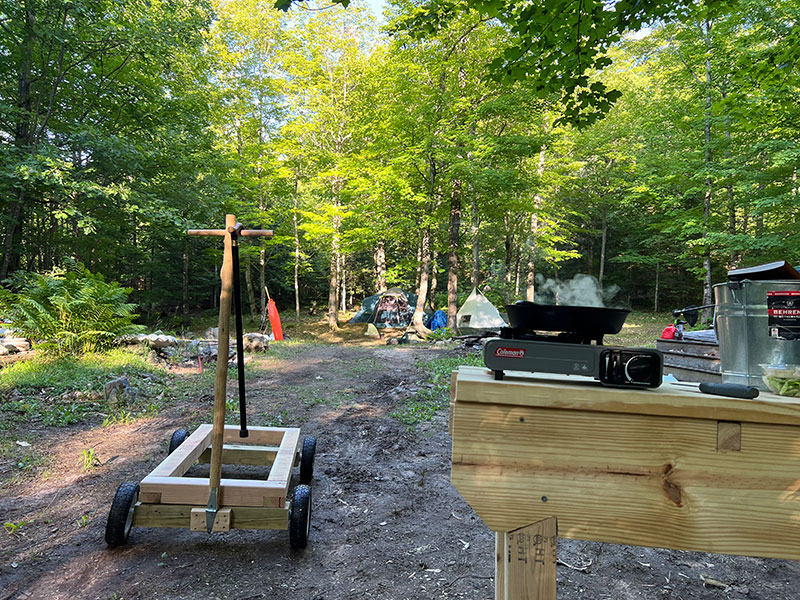


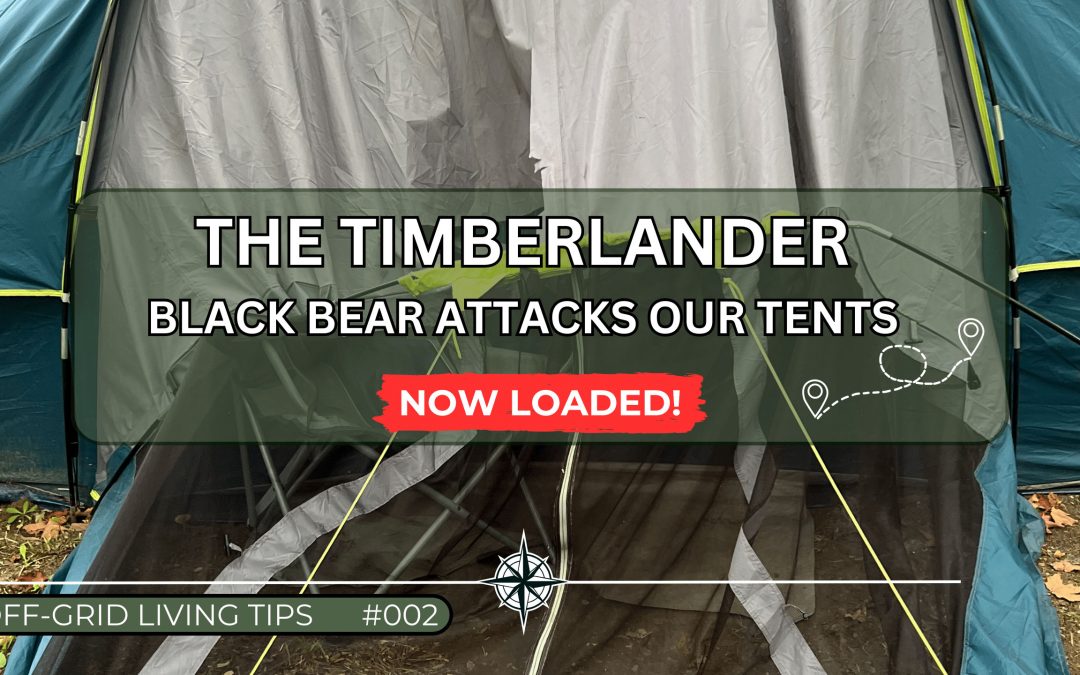
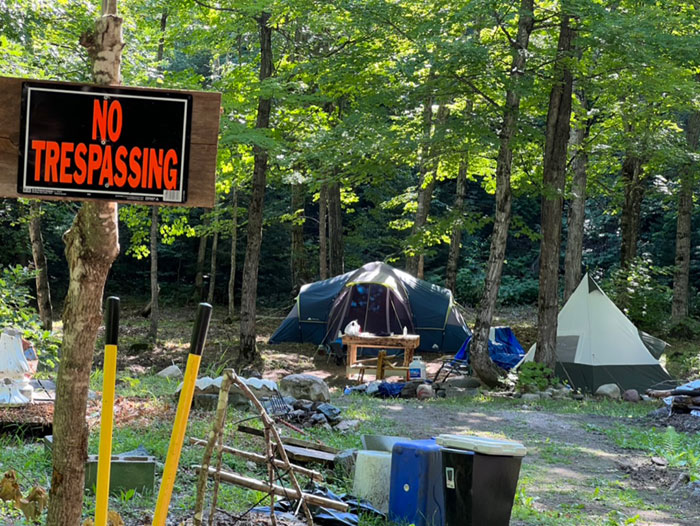
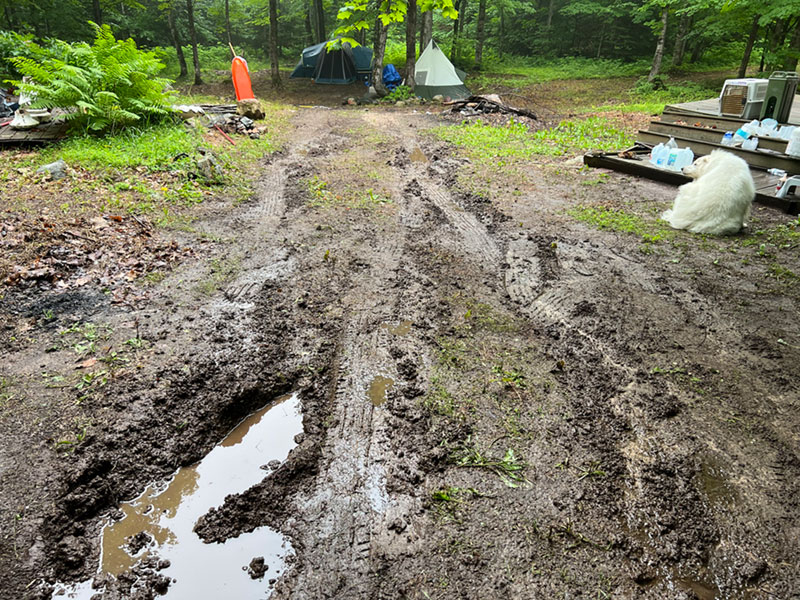
0 Comments